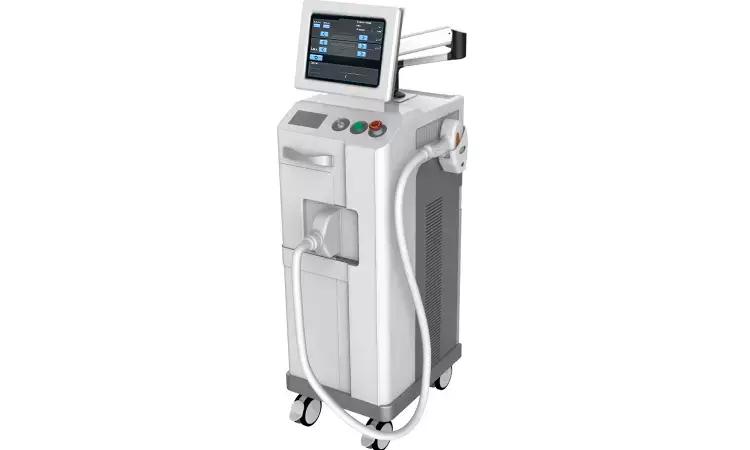- Home
- Medical news & Guidelines
- Anesthesiology
- Cardiology and CTVS
- Critical Care
- Dentistry
- Dermatology
- Diabetes and Endocrinology
- ENT
- Gastroenterology
- Medicine
- Nephrology
- Neurology
- Obstretics-Gynaecology
- Oncology
- Ophthalmology
- Orthopaedics
- Pediatrics-Neonatology
- Psychiatry
- Pulmonology
- Radiology
- Surgery
- Urology
- Laboratory Medicine
- Diet
- Nursing
- Paramedical
- Physiotherapy
- Health news
- Fact Check
- Bone Health Fact Check
- Brain Health Fact Check
- Cancer Related Fact Check
- Child Care Fact Check
- Dental and oral health fact check
- Diabetes and metabolic health fact check
- Diet and Nutrition Fact Check
- Eye and ENT Care Fact Check
- Fitness fact check
- Gut health fact check
- Heart health fact check
- Kidney health fact check
- Medical education fact check
- Men's health fact check
- Respiratory fact check
- Skin and hair care fact check
- Vaccine and Immunization fact check
- Women's health fact check
- AYUSH
- State News
- Andaman and Nicobar Islands
- Andhra Pradesh
- Arunachal Pradesh
- Assam
- Bihar
- Chandigarh
- Chattisgarh
- Dadra and Nagar Haveli
- Daman and Diu
- Delhi
- Goa
- Gujarat
- Haryana
- Himachal Pradesh
- Jammu & Kashmir
- Jharkhand
- Karnataka
- Kerala
- Ladakh
- Lakshadweep
- Madhya Pradesh
- Maharashtra
- Manipur
- Meghalaya
- Mizoram
- Nagaland
- Odisha
- Puducherry
- Punjab
- Rajasthan
- Sikkim
- Tamil Nadu
- Telangana
- Tripura
- Uttar Pradesh
- Uttrakhand
- West Bengal
- Medical Education
- Industry
Endoscopic diode laser-cauterization superior for treatment of pyriform sinus fistula

Acute suppurative thyroiditis through the congenital pyriform sinus fistula (PSF) often recurs if the fistula is not resected. Although endoscopic chemo-cauterization (ECC) to obliterate the orifice of the fistula is less invasive than open fistulectomy, it may require repeated treatments. While, the endoscopic diode laser-cauterization (ELC) system may yield superior outcomes and is therefore the optimal treatment modality for pyriform sinus fistula, finds a study recently published in the Journal of Otolaryngology- Head and Neck Surgery.
A team of researchers from the Department of Surgery, Kuma Hospital, Hyogo, Japan recently adopted an endoscopic diode laser-cauterization (ELC) system with the intention of improving treatment outcomes in pyriform sinus fistula. The investigators described endoscopic diode laser-cauterization and compared the outcomes of these three modalities.
The authors evaluated a total of 83 patients with pyriform sinus fistula who underwent treatment at Kuma Hospital, a tertiary thyroid treatment hospital.
Patients who were ineligible for the endoscopic procedures underwent open fistulectomy. Barium swallow studies and computed tomography scan under a trumpet maneuver were performed after treatment to evaluate obliteration or removal of the fistula.
It was found out that in total, 70 of the 81 (86%) patients who underwent barium swallow studies after the first treatment achieved obliteration or removal of the fistula. The success rates for open fistulectomy, endoscopic chemo-cauterization, and endoscopic diode laser-cauterization were 100% (9/9), 83% (49/59), and 100% (13/13), respectively.
Endoscopic chemo-cauterization and endoscopic diode laser-cauterization had significantly shorter operative times and lower blood loss than open fistulectomy. Insufficient opening of the mouth was the major reason for converting endoscopic procedures to open fistulectomy.
As a result, the authors concluded that endoscopic diode laser-cauterization may yield superior outcomes and is therefore the optimal treatment modality for pyriform sinus fistula. However, it is still associated with certain limitations. Thus, treatment selection remains dependent on the shape and size of the pyriform sinus fistula and the mouth opening of the individual patient.
For further reference, log in to:
Masuoka, H., Miyauchi, A., Sasaki, T. et al. Outcomes of endoscopic chemo- and laser-cauterizations and open fistulectomy for pyriform sinus fistula. J of Otolaryngol - Head & Neck Surg 50, 49 (2021). https://doi.org/10.1186/s40463-021-00537-7
Dr. Nandita Mohan is a practicing pediatric dentist with more than 5 years of clinical work experience. Along with this, she is equally interested in keeping herself up to date about the latest developments in the field of medicine and dentistry which is the driving force for her to be in association with Medical Dialogues. She also has her name attached with many publications; both national and international. She has pursued her BDS from Rajiv Gandhi University of Health Sciences, Bangalore and later went to enter her dream specialty (MDS) in the Department of Pedodontics and Preventive Dentistry from Pt. B.D. Sharma University of Health Sciences. Through all the years of experience, her core interest in learning something new has never stopped. She can be contacted at editorial@medicaldialogues.in. Contact no. 011-43720751
Dr Kamal Kant Kohli-MBBS, DTCD- a chest specialist with more than 30 years of practice and a flair for writing clinical articles, Dr Kamal Kant Kohli joined Medical Dialogues as a Chief Editor of Medical News. Besides writing articles, as an editor, he proofreads and verifies all the medical content published on Medical Dialogues including those coming from journals, studies,medical conferences,guidelines etc. Email: drkohli@medicaldialogues.in. Contact no. 011-43720751


